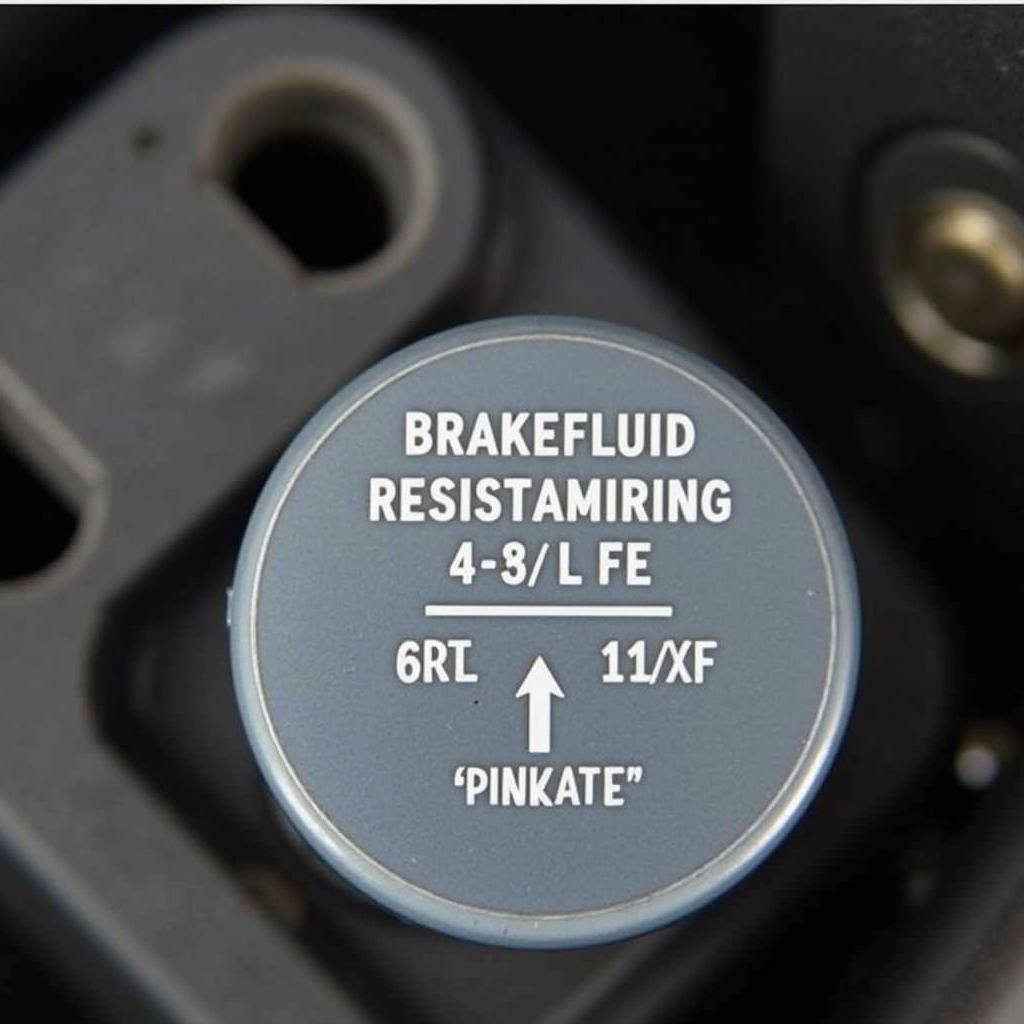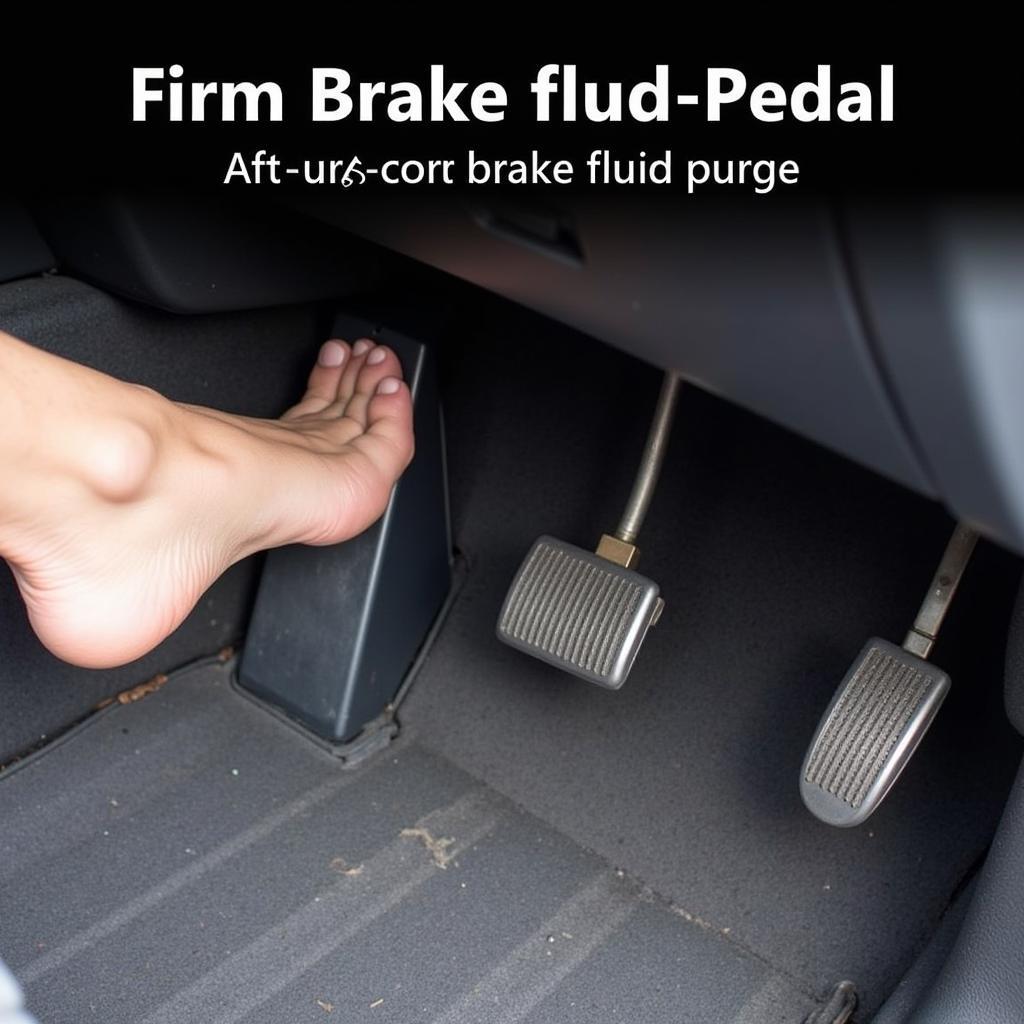A brake fault warning light on your 2003 Passat can be a real heart-stopper, especially if you’re unsure about its cause. While it’s always best to consult a professional mechanic for any brake-related issues, sometimes a simple brake fluid flush and purge might be the solution. This guide will walk you through the steps of how to purge the brake system on your 2003 Passat, potentially resolving the pesky brake fault warning.
Disclaimer: This guide is for informational purposes only. Attempting to work on your car’s braking system without proper knowledge and experience can be dangerous. We recommend consulting with a certified mechanic for any serious brake issues.
Understanding the Brake Fault Warning
Before diving into the purging process, it’s important to understand why that brake fault warning light is staring back at you. Your Passat, like most modern cars, has a closed hydraulic braking system. When you press the brake pedal, it activates a piston in the master cylinder, pushing brake fluid through the lines and to the calipers at each wheel, engaging the brakes.
That brake fault warning light can illuminate for several reasons:
- Low Brake Fluid: This is the most common culprit. As brake pads wear down, the brake fluid level naturally drops. If it gets too low, the warning light triggers.
- Air in the Brake Lines: Air can get trapped in the brake lines, making the brake pedal feel spongy and reducing braking efficiency.
- Faulty Brake Light Switch: In some cases, a malfunctioning brake light switch can cause the brake fault warning light to illuminate.
- ABS Issue: A problem with the Anti-lock Braking System (ABS) can also trigger the warning light.
 Brake Fluid Reservoir
Brake Fluid Reservoir
When to Purge Your Brake System
You should consider purging your 2003 Passat’s brake system when:
- You see the brake fluid level is low in the reservoir.
- Your brake pedal feels spongy or soft.
- You’ve recently replaced any brake components, such as calipers, brake hoses, or the master cylinder.
Tools You’ll Need
- Wrench Set: To loosen and tighten bleed screws.
- Clear Tubing: To fit over the bleed screws and direct the old fluid into a container.
- Container: To collect the old brake fluid.
- Fresh Brake Fluid: Use only the type of brake fluid specified in your Passat’s owner’s manual.
- Assistant: An extra pair of hands to help pump the brakes.
- Safety Glasses & Gloves: To protect your eyes and skin from brake fluid.
Step-by-Step Guide to Purge Brake Fault Warning
-
Park on a Level Surface: Ensure your Passat is parked on a level surface and engage the parking brake.
-
Locate the Brake Fluid Reservoir: Open the hood and locate the brake fluid reservoir. It’s usually a clear plastic container with a black cap, positioned on the driver’s side of the engine bay.
-
Clean the Reservoir Cap: Before opening the reservoir, clean the area around the cap to prevent dirt from entering the system.
-
Check the Fluid Level: Open the reservoir and check the brake fluid level. If it’s low, top it off with fresh brake fluid to the “Max” line.
-
Prepare Your Tools: Attach the clear tubing to the bleed screw of the wheel furthest from the master cylinder (usually the right rear wheel). Place the other end of the tubing into your container.
-
Start Bleeding the Brakes: Have your assistant pump the brake pedal several times, then hold it down firmly.
-
Loosen the Bleed Screw: While your assistant is holding the brake pedal down, loosen the bleed screw slightly. You’ll see old brake fluid and air bubbles flow out through the tubing.
-
Tighten the Bleed Screw: Once the fluid stream becomes steady, tighten the bleed screw.
-
Repeat Steps 6-8: Have your assistant continue to pump and hold the brake pedal while you repeat the bleeding process on the same wheel until you no longer see air bubbles in the tubing.
-
Move to the Next Wheel: Once the first wheel is bled, move to the next furthest wheel from the master cylinder (usually the left rear) and repeat steps 6-9.
-
Continue Bleeding: Continue bleeding the brakes in the following order: Right Front, then Left Front.
-
Check Fluid Level and Test: After bleeding all four wheels, double-check the brake fluid level in the reservoir and top it off if needed. Start your car and test the brakes. The pedal should feel firm, and the brake warning light should be off.
 Brake Pedal Test
Brake Pedal Test
Expert Insight: “Remember, brake fluid is corrosive. Clean up any spills immediately and dispose of the old fluid properly.” – John Miller, Certified Automotive Technician.
Conclusion
While purging your 2003 Passat’s brake system can potentially address the brake fault warning, always prioritize safety. If the warning light persists or you experience any unusual braking behavior after the purge, consult a qualified mechanic immediately.
Remember: Regular maintenance and timely attention to your car’s warning lights can help you avoid more serious issues down the road.
